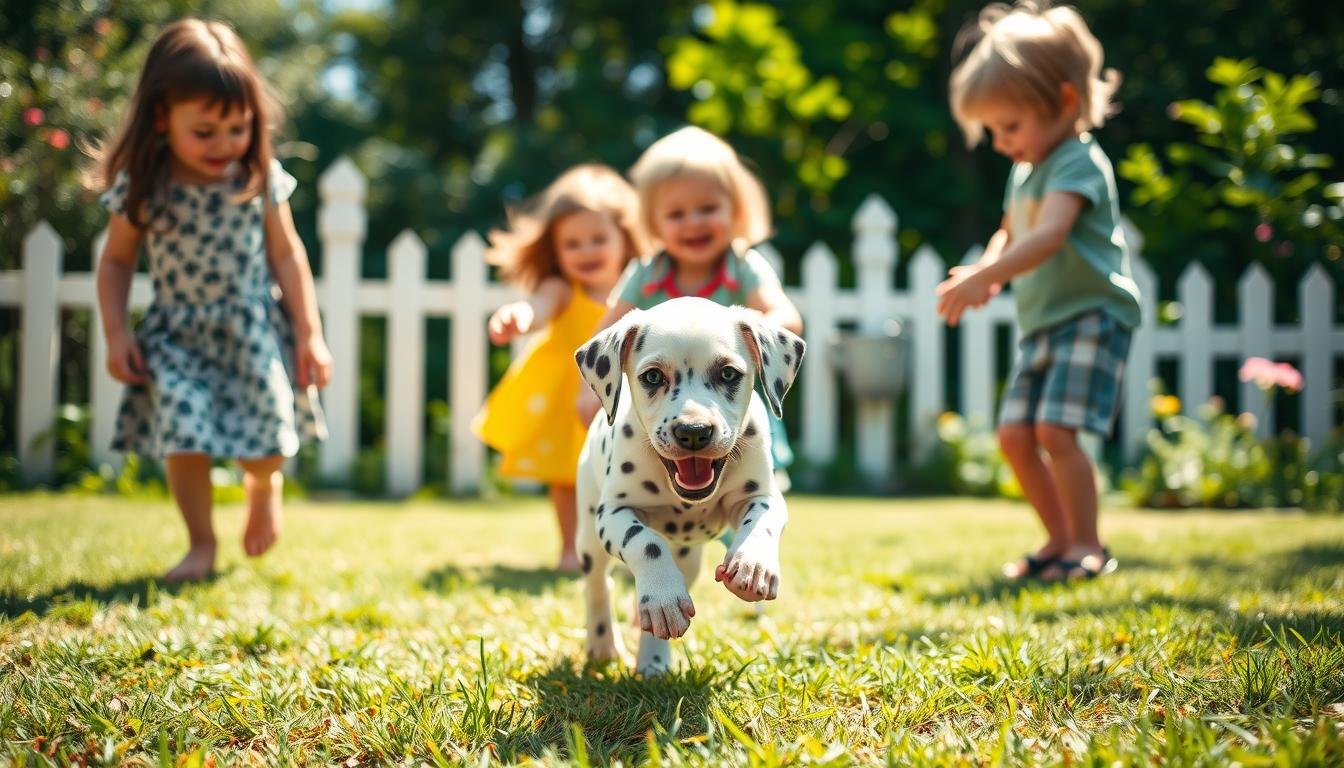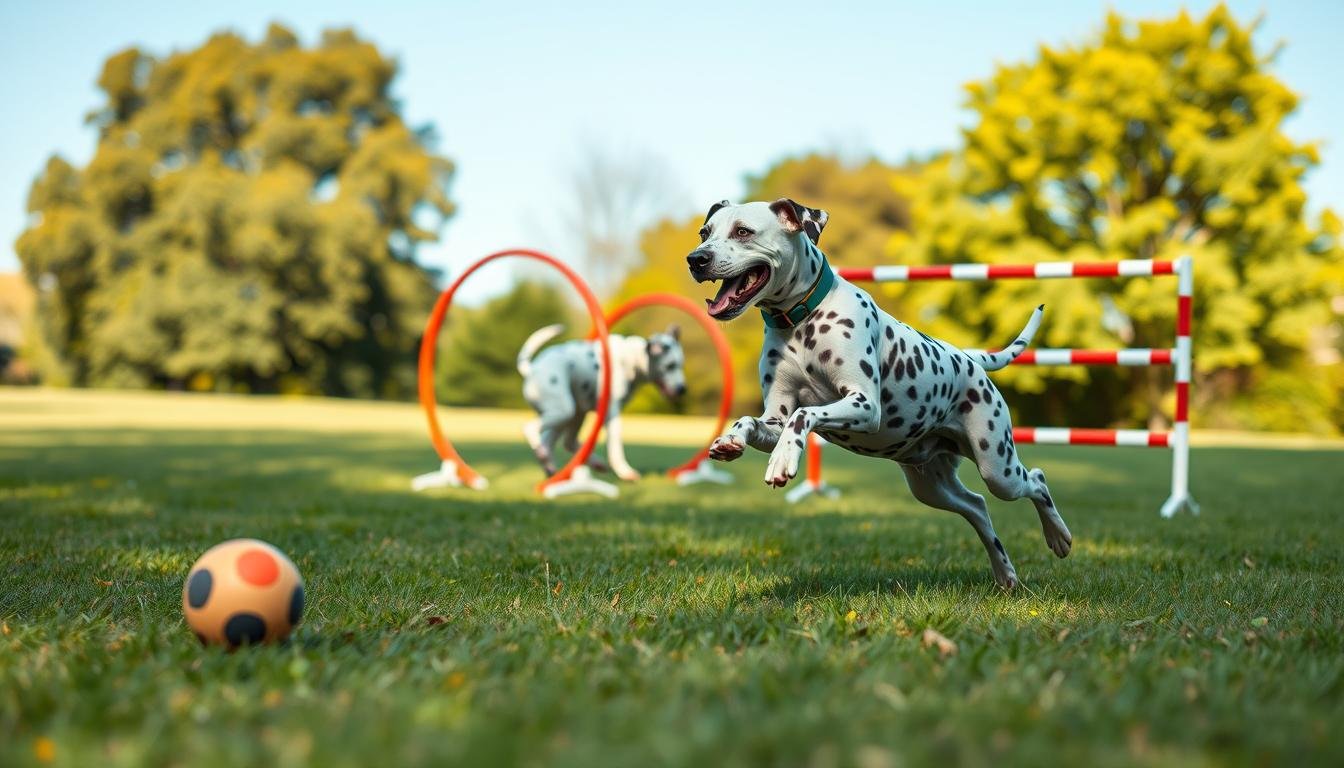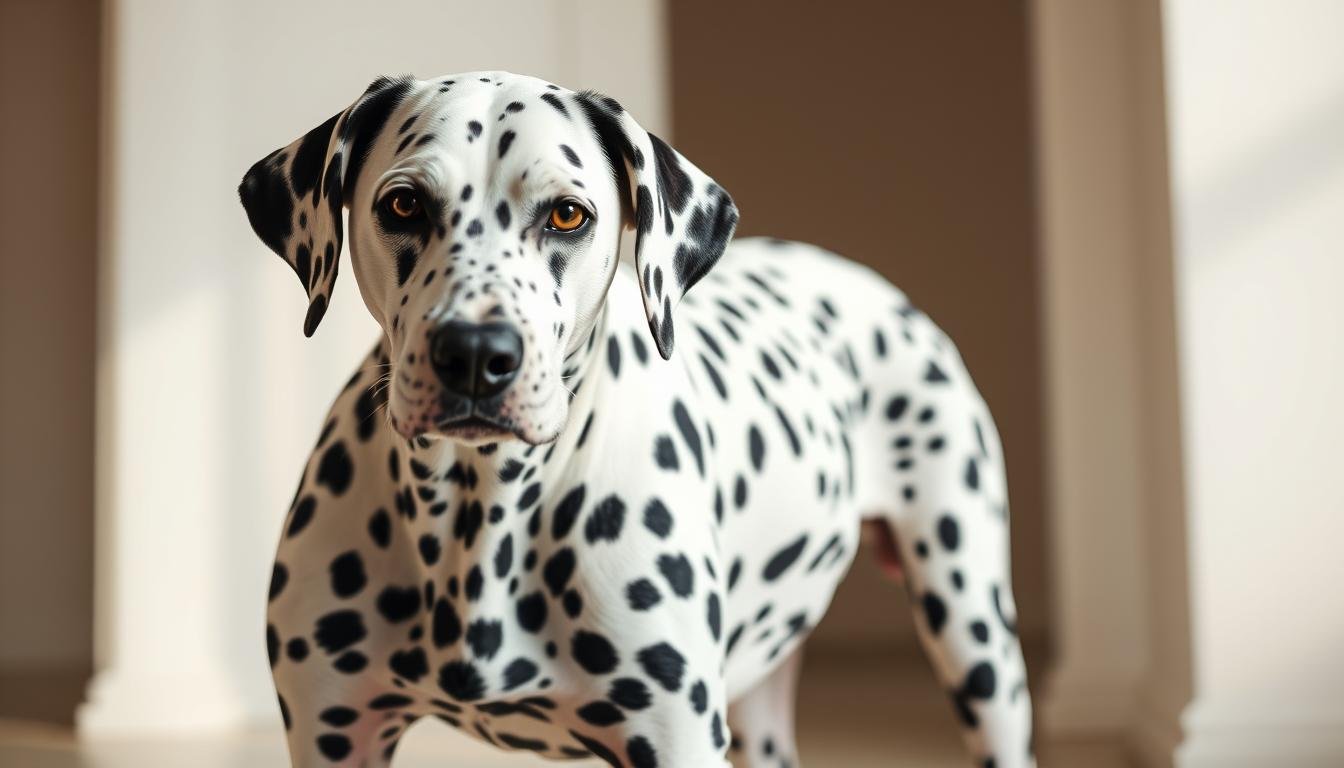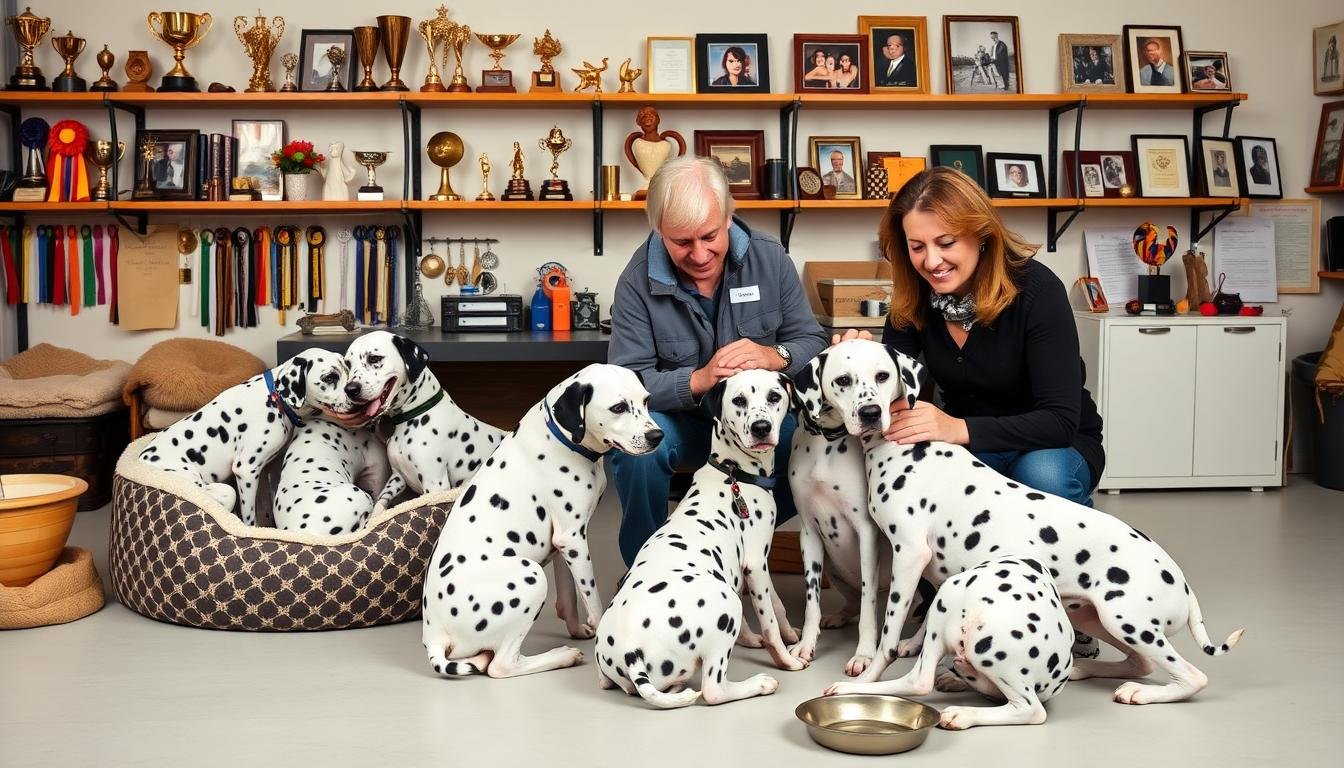The Australian Terrier is a small but spirited dog breed with a distinct appearance and a charming personality, making them loyal companions for your family1. With their small size and sturdy build, this breed is perfect for active families who want a companion that can keep up with their lifestyle. As a dog breed, the Australian Terrier is known for its loyalty, intelligence, and courageous nature, which makes them an excellent choice for families with children. The Australian Terrier typically stands about 10-11 inches tall at the shoulder and weighs between 14-16 pounds1, making them a great fit for families living in apartments or houses.
As loyal companions, Australian Terriers are often described as having a strong prey drive, requiring regular mental stimulation and exercise1. They are also highly intelligent and respond well to positive training methods, making them easy to train. With their high energy level and need for significant mental and physical stimulation2, Australian Terriers are compatible with active families, singles, apartments, and houses. Their temperament is playful, and they are good with children, families, and seniors3, making them an excellent choice for families who want a loyal and affectionate companion.
Key Takeaways
- The Australian Terrier is a small but spirited dog breed with a distinct appearance and a charming personality.
- They are loyal companions for active families who want a companion that can keep up with their lifestyle.
- Australian Terriers are highly intelligent and respond well to positive training methods.
- They have a high energy level and need significant mental and physical stimulation.
- Australian Terriers are compatible with active families, singles, apartments, and houses, and are good with children, families, and seniors3.
- They are a great choice for families who want a loyal and affectionate companion1.
- Australian Terriers are easy to train and have a low shedding amount3.
Introduction to the Australian Terrier
The Australian Terrier is a breed with a rich historical background, originating in Australia during the early 19th century4. With its rugged terrain and harsh climate, Australia provided the perfect environment for the Australian Terrier to develop its unique characteristics and temperament. As a result, the breed has evolved into a loyal and affectionate companion, making it an excellent choice for families.
When it comes to the breed overview, the Australian Terrier is a small to medium-sized dog, with a height of 10 to 11 inches and a weight of 15 to 20 pounds5. They have a short, dense coat that requires regular grooming. The Australian Terrier is a high-energy breed that requires at least 30 to 45 minutes of exercise per day5. They are also highly intelligent and trainable, but can be prone to barking excessively if left alone for too long6.
Here are some key characteristics of the Australian Terrier:
- High energy level
- High intelligence and trainability
- Medium tendency to bark
- Low shedding
The Australian Terrier is a beloved breed, and its popularity continues to grow. With proper care and attention, they can thrive as a loyal and loving companion4.
| Characteristics | Description |
|---|---|
| Height | 10 to 11 inches5 |
| Weight | 15 to 20 pounds5 |
| Life Span | 11 to 15 years5 |
Physical Characteristics of Australian Terriers

The Australian Terrier is a small breed, known for its distinctive physical characteristics, including its size, weight, and coat. On average, they stand about 10-11 inches tall and weigh between 14-16 pounds7. Their physical characteristics make them an ideal companion for families who live in small spaces or have limited room for a large dog.
One of the notable features of the Australian Terrier is its coat, which comes in a variety of colors, including blue and tan, sandy, and red5. They have a rough double coat, which requires regular grooming to prevent matting and tangling. The coat types and colors of the Australian Terrier are an essential aspect of its physical characteristics, making it a visually appealing breed.
In terms of size and weight, Australian Terriers are generally small, with males weighing approximately 6.5 kilograms (14 pounds)7. Their compact size makes them a great choice for city living or for families with limited space. Additionally, their weight and size make them easy to manage and care for, requiring moderate exercise and a balanced diet8.
Overall, the physical characteristics of the Australian Terrier, including its size, weight, coat types, and coat colors, make it a unique and charming breed. With proper care and attention, they can thrive as a beloved companion for many years5.
Personality Traits of Australian Terriers
The Australian Terrier is known for its spirited and confident temperament, making it a great companion for families9. With its high intelligence and eagerness to please, this breed is highly trainable, making it an excellent choice for first-time dog owners10. The Australian Terrier’s temperament is also characterized by its loyalty and affection towards its family, making it an ideal companion for families who want a dog that will be by their side.
In terms of intelligence, Australian Terriers are highly intelligent and responsive to training, which makes them easy to train10. Their trainability is also influenced by their high energy levels and strong prey drive, making early socialization and training crucial9. With proper training and socialization, Australian Terriers can develop good personality traits and become well-behaved companions.
Here are some key characteristics of the Australian Terrier’s personality:
- Spirited and confident temperament10
- Highly intelligent and trainable10
- Loyal and affectionate towards family9
- High energy levels and strong prey drive9
Overall, the Australian Terrier’s unique combination of personality traits, temperament, intelligence, and trainability make it a popular breed for families and individuals looking for a loyal and loving companion910.
The Australian Terrier as a Family Pet

As a family pet, the Australian Terrier is an excellent choice for families with children, given its playful and gentle nature11. With proper socialization, this breed can get along well with other pets, including cats and other dogs. It is essential to supervise interactions between the Australian Terrier and other pets, especially if they are not familiar with each other.
When it comes to compatibility with children, Australian Terriers are generally a great match, as they are energetic and loving, making them an excellent addition to families with kids11. However, it’s crucial to teach children how to interact with dogs gently and respectfully. Australian Terriers require socialization with other pets to ensure they grow into well-adjusted adult dogs, and this socialization should start from an early age12.
Some key considerations for Australian Terrier owners include:
- Providing regular exercise and mental stimulation to prevent problem behaviors11
- Supervising interactions with other pets and children to ensure everyone’s safety12
- Training the dog to walk on a leash and respond to basic commands11
By understanding the needs and characteristics of the Australian Terrier, you can create a happy and harmonious home for both your family and your pet12. With proper care and attention, the Australian Terrier can thrive as a family pet, bringing joy and companionship to your life.
Health Considerations for Australian Terriers
As a responsible dog owner, it’s essential to be aware of the common health issues that can affect your Australian Terrier. Regular veterinary care is crucial in preventing and detecting these issues early on. Australian Terriers are generally a healthy breed, but they can be prone to certain health issues, such as luxating patella and Legg-Calve-Perthes disease13. Dental disease is also a significant concern, affecting 80% of all dogs by age two14.
Some common health issues that can affect Australian Terriers include:
- Luxating patella, which can cause knee problems and require surgery13
- Diabetes, which can be managed with daily insulin injections14 and13
- Cancer, which can be a significant health concern for Australian Terriers, with 67% of mature dogs dying from cancer13
Regular veterinary care is vital in maintaining your Australian Terrier’s health and well-being. This includes regular check-ups, vaccinations, and preventative care, such as dental cleanings and parasite control. By working closely with your veterinarian, you can help ensure that your Australian Terrier lives a long and healthy life, free from common health issues14 and13.
Grooming Needs for Australian Terriers
As an owner of an Australian Terrier, it’s essential to understand their grooming needs to keep their coat clean and healthy. The Australian Terrier has a rough double coat that requires regular brushing and bathing to prevent matting and tangling15. Regular grooming practices can reduce the incidence of coat issues such as matting, knots, and skin irritations15.
When it comes to brushing, it’s recommended to brush your Australian Terrier’s coat at least once a week16. However, during shedding season, you may need to brush their coat more frequently to prevent matting and tangling. Bathing is also an essential part of grooming, and wire-coated dogs like Australian Terriers may require bathing every four to six weeks16.
In addition to brushing and bathing, regular inspection and cleaning of your dog’s eyes and ears is recommended to prevent potential infections16. You should also trim excess hair around the eyes and face periodically for aesthetic and health reasons. DIY grooming is a cost-effective option that can strengthen the bond between you and your dog, but professional grooming can save time and ensure thorough care15.
Here are some key grooming tips for Australian Terriers:
- Brush their coat at least once a week16
- Bathe them every four to six weeks16
- Inspect and clean their eyes and ears weekly16
- Trim excess hair around the eyes and face periodically
- Consider DIY grooming or professional grooming options15
Remember to always use dog-specific shampoo, as human products can lead to skin irritations for Australian Terriers15. By following these grooming tips, you can keep your Australian Terrier’s coat clean and healthy, and strengthen your bond with them.
| Grooming Activity | Frequency |
|---|---|
| Brushing | At least once a week16 |
| Bathing | Every four to six weeks16 |
| Eyes and Ears Cleaning | Weekly16 |
Training Your Australian Terrier
When it comes to training your Australian Terrier, it’s essential to use positive reinforcement techniques, which emphasize rewards and praise rather than punishment and correction17. This breed is highly intelligent and trainable, but it can be independent and stubborn at times. With patience, consistency, and positive reinforcement, you can teach your Australian Terrier basic obedience commands and tricks.
Basic training techniques, such as “sit,” “stay,” and “come,” are crucial for establishing a well-behaved pup17. It’s also important to socialize your Australian Terrier to prevent behavioral issues. Regular exercise, such as daily play sessions, is recommended to keep your dog physically and mentally healthy18. Training sessions should be kept short to avoid boredom, and you can use various training methods, including clicker training17.
Some useful tips for training your Australian Terrier include:
- Be consistent and patient
- Use positive reinforcement techniques
- Keep training sessions short and fun
- Socialize your dog to prevent behavioral issues
By following these tips and using basic training techniques, you can develop a strong bond with your Australian Terrier and help them become a well-behaved and loyal companion19.
Activity Level and Exercise Requirements
As an active breed, Australian Terriers require regular exercise to stay happy and healthy. Their high energy level and love of activity demand daily exercise, including walks, runs, and playtime20. You can also engage your Australian Terrier in fun activities, such as agility training, obedience training, and playtime with other dogs. According to research, Australian Terriers need a minimum of 30 minutes to 1 hour of daily exercise20, which can be distributed across multiple shorter walks.
Adult Australian Terriers can comfortably walk between 1.6 to 4.8 kilometres in a day20, and they require more than 1 hour of vigorous physical activity every day21. Exercise needs may vary based on age, health, and individual energy levels, requiring more or less depending on the dog20. Regular socialisation is essential to prevent behavioural issues20, and supervised off-leash play is crucial due to their strong prey drive20.
Some fun activities for your Australian Terrier include:
- Agility training
- Obedience training
- Playtime with other dogs
- Running and hiking
These activities contribute to both physical and mental stimulation, which is essential for the overall well-being of your dog20. Remember to provide your Australian Terrier with regular indoor games to mitigate boredom-related behaviors21.
By understanding the activity level and exercise requirements of your Australian Terrier, you can provide them with the care and attention they need to thrive. With their high energy level and love of activity, it’s essential to engage them in daily exercise and fun activities to keep them happy and healthy21.
Choosing an Australian Terrier Puppy
When considering choosing a puppy, it’s essential to find a reputable breeder who prioritizes the health and well-being of their dogs22. This involves researching and understanding the breed standards, as well as the breeder’s policies and practices. A reputable breeder will provide health clearances for the parents of the puppy, as well as information on the puppy’s temperament and personality.
In addition to finding a reputable breeder, you should also consider the pros and cons of adoption vs. purchasing a puppy. Adoption can be a rewarding experience, as it provides a loving home to a dog in need23. However, purchasing from a reputable breeder can provide more information about the puppy’s ancestry and health.
Here are some key factors to consider when choosing an Australian Terrier puppy:
- Research the breeder and their reputation
- Ask for health clearances and information on the puppy’s temperament
- Consider the pros and cons of adoption vs. purchasing
- Ensure the breeder provides a contract and guarantees the health of the puppy
By taking the time to research and understand the process of choosing an Australian Terrier puppy, you can make an informed decision and find a loving companion for your family22.
Remember, choosing a puppy is a big responsibility, and it’s essential to prioritize the health and well-being of the dog23. With the right breeder and a little research, you can find a happy and healthy Australian Terrier puppy to join your family.
| Breeder | Adoption | Purchasing |
|---|---|---|
| Reputable breeder | Shelter or rescue | Reputable breeder or pet store |
| Health clearances and information on puppy’s temperament | Unknown ancestry and health | Information on puppy’s ancestry and health |
Life Expectancy and Aging in Australian Terriers
As your Australian Terrier ages, it’s essential to understand their life expectancy and the aging process. The average lifespan of Australian Terriers is 11-15 years12, which is a relatively long life expectancy compared to other dog breeds. With proper care and attention, your Australian Terrier can live a happy and healthy life, even in their senior years.
To ensure your Australian Terrier lives a long and healthy life, it’s crucial to provide regular veterinary check-ups, a balanced diet, and plenty of exercise and mental stimulation. As they age, their needs may change, and it’s essential to adjust their care accordingly. For example, their dietary needs may decrease, and they may require less exercise24.
Caring for senior terriers requires attention to their specific needs. Here are some tips to help you care for your aging Australian Terrier:
- Provide regular veterinary check-ups to monitor their health and catch any potential issues early12.
- Feed a balanced diet that meets their nutritional needs, and consider a senior dog food formula24.
- Offer plenty of exercise and mental stimulation to keep them engaged and active24.
- Provide a comfortable and safe living space, with easy access to food, water, and shelter12.
By following these tips and providing proper care and attention, you can help your Australian Terrier live a long and healthy life, and enjoy their companionship for many years to come.
| Age | Life Expectancy | Care Requirements |
|---|---|---|
| 11-15 years | Senior | Regular veterinary check-ups, balanced diet, plenty of exercise and mental stimulation |
Conclusion: Why an Australian Terrier Fits Your Family
The Australian Terrier is a delightful breed that makes an excellent addition to any active family. With their loyal and affectionate nature, these pint-sized pups are sure to bring endless joy and companionship into your home25. Standing at 10-11 inches tall and weighing 14-16 pounds26, the Australian Terrier is a compact and energetic companion that can keep up with your family’s lifestyle.
Beyond their charming appearance, these terriers are highly intelligent and respond well to positive reinforcement training26. With a moderate to high energy level25, they require 30-60 minutes of daily exercise to stay healthy and happy25. Their low-maintenance coat and25minimal shedding also make them an excellent choice for families with busy schedules.
Whether you’re a seasoned dog owner or a first-time pet parent, the Australian Terrier is a breed that is sure to fit seamlessly into your family27. Recognized for their loyalty, friendly temperament, and suitability as companion dogs27, these terriers are adaptable to a variety of living situations and make wonderful family pets25. With an average lifespan of 12-15 years25, the Australian Terrier will be a beloved member of your household for years to come.
FAQ
What is the Australian Terrier breed known for?
What is the history of the Australian Terrier?
What are the physical characteristics of the Australian Terrier?
What is the temperament of the Australian Terrier?
How do Australian Terriers interact with children and other pets?
What health issues are common in Australian Terriers?
How much grooming do Australian Terriers require?
How do you train an Australian Terrier?
How much exercise do Australian Terriers need?
How can I choose a healthy Australian Terrier puppy?
How long do Australian Terriers live, and how can I care for them in their senior years?
Source Links
- Australian Terrier: A Lively and Loyal Breed with a Rich History – https://vocal.media/petlife/australian-terrier-a-lively-and-loyal-breed-with-a-rich-history
- Australian Terrier Dog Breed: Info, Pictures, Traits & Care – Dogster – https://www.dogster.com/dog-breeds/australian-terrier
- Pawdarling | Pet Insurance, Dog Insurance & Cat Insurance – https://pawdarling.com/resources/pet-breeds-article/dog/australian-terrier
- The Early History of the Australian Terrier, Also Known as Aussies – https://showsightmagazine.com/the-early-history-of-the-australian-terrier-also-known-as-aussies/
- Meet the Small and Courageous Australian Terrier – https://www.thesprucepets.com/australian-terrier-full-profile-history-and-care-4766868
- Australian Terrier – https://www.orvis.com/australian-terrier.html?srsltid=AfmBOopMxKMyEnmPVWG38-Tdoz8PPw0o8iDPKnK62Di1c28noNgTgPUW
- Australian Terrier – https://en.wikipedia.org/wiki/Australian_Terrier
- Australian Terrier – https://www.orvis.com/australian-terrier.html?srsltid=AfmBOoqiAphjjknBOwN1Rz5XZSjo07AkTsxCNl5xabdWr7nYm0gLyviL
- What to Know About Australian Terriers – https://www.webmd.com/pets/dogs/what-to-know-about-australian-terriers
- Australian Terrier Dog Breed Information & Characteristics – https://dogtime.com/dog-breeds/australian-terrier
- Australian Terrier – https://www.orvis.com/australian-terrier.html
- Australian Terrier – https://www.petmd.com/dog/breeds/australian-terrier
- No title found – https://www.petinsurancequotes.com/blog/australian-terrier-breed-information/
- Breed Info – Parkwood Animal Hospital – https://parkwoodanimalhospital.com/client-resources/breed-info/australian-terrier/
- Australian Terrier Grooming Guide for First-Time Owners – https://jimsdogwash.net.au/2024/12/30/australian-terrier-grooming-guide-for-first-time-dog-owners/
- Australian Terrier | Wahl USA – https://wahlusa.com/pet-grooming/product-selector/dog/australian-terrier?srsltid=AfmBOoroRb4CmDOL7vEJEH5iY-Mn-oax3zQZ-5VTCq8P90QbFpfFY5Lw
- Australian Terrier Training: An Essential Guide – https://pets.joinfluffy.com/pet-universe/post/dog/training/australian-terrier-training
- How to Train an Australian Terrier – Alaska Dog Works – https://alaskadogworks.com/how-to-train-an-australian-terrier/
- Training Tips For Australian Terrier Dog Breeds – https://www.trainpetdog.com/Australian-Terrier/index1.php
- Exercise Requirements of the Australian Terrier: Energetic and Spirited Companions – https://puppylist.com.au/breeds/australian-terrier/exercise/
- Australian Terrier – https://www.orvis.com/australian-terrier.html?srsltid=AfmBOopAIPkrtMnkcEbyAS_F7sv3YTMHkHnyJd_Vmhip-2eNlYvvTjNb
- Considering an Australian Terrier – https://www.dunhamlakeaustralianterriers.com/considering-an-australian-terrier/
- Australian Terrier – https://www.orvis.com/australian-terrier.html?srsltid=AfmBOoroJDmuwYQ2CU4lreF3nkNFfME9DoQVgDUOB0NiqpCg94cyHgWI
- Australian Terrier – https://www.orvis.com/australian-terrier.html?srsltid=AfmBOorW3us6QoXzmcb9F1q_sNRWj9KA9kBAFJvkvhWAeAlrUsQRBU4I
- Australian Terrier: The Energetic Companion for All – https://www.dogpackapp.com/blog/dog-breeds/australian-terrier/
- Australian Terrier: Traits, Care, Diet and Training Tips – https://tibetandogchew.com/pages/breeds/australian-terriers
- Australian Terrier Breeds – https://dogsqueensland.org.au/Breeds/browse-all-breeds/64/Australian-Terrier/












Leave a Reply